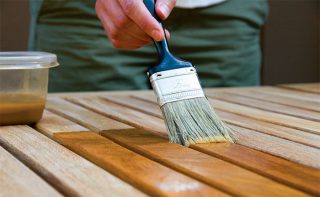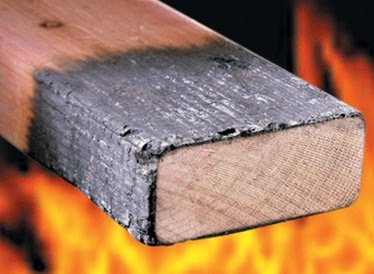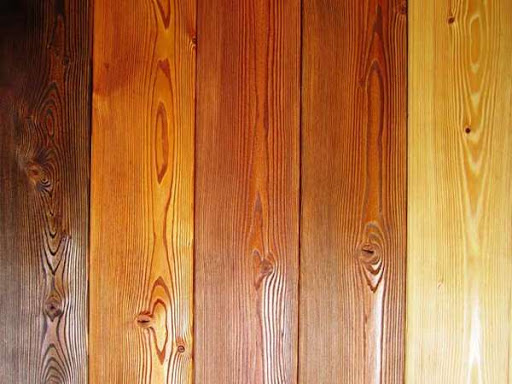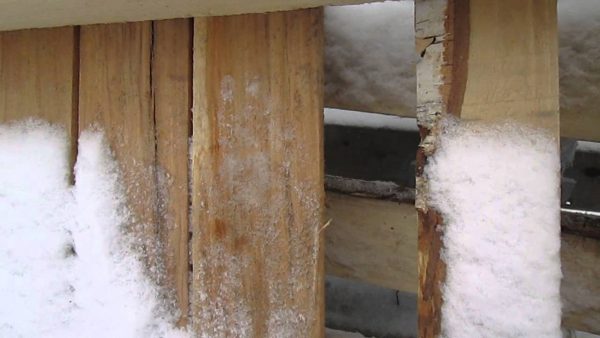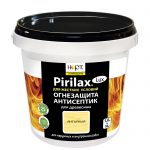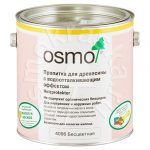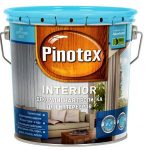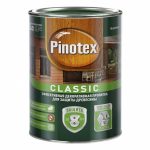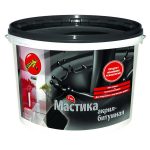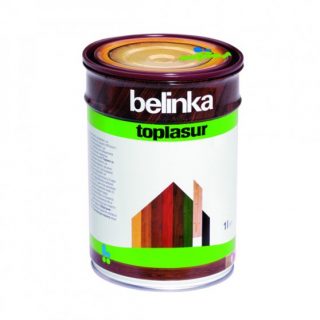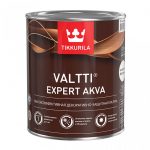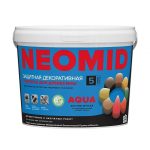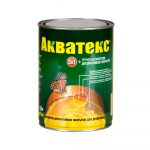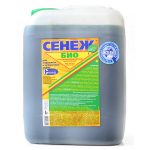The wood is protected from the risk of deformation and damage by conservation. For this, impregnation for wood is used. The formulations protect against moisture, rapid combustion, and biological factors. Impregnating primers are used in the construction process, during finishing and repair work.
Varieties of wood impregnation
Physicomechanical option protects structures and materials from destruction due to:
- decay, mold development;
- the actions of bugs, insects;
- fire;
- ultraviolet radiation;
- dirt, dust;
- impacts, scratches, friction.
Structural the method is used in the process of erecting wooden houses. Its purpose is to protect the material from prolonged exposure to moisture. Sometimes this method cannot be applied, for example, processing railway sleepers, wooden fences.
Various types of solutions are used for their intended purpose and depending on the base.
Fungal lesions cause discoloration and reduce strength. They appear outside the walls, at the ends, on the side, in the area of knots. One of the most effective methods is conservation with dioxins... This option is used outside, since it is unhealthy. Distributed preservation with saline solutions, creosote and bitumen impregnation, painting.
By appointment
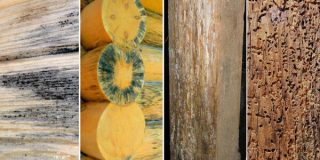
By appointment impregnations for wood are:
- Antiseptic. The category includes well-known compounds that have been used in construction for a long time. For example, FN (sodium fluoride), CFA (ammonium silicofluoride), BB-32 (boric acid and borax), septic tank KF, Senezh.
- Waterproof. Contains oils, wax to prevent water from getting inside. The protection is not washed out for a long time, even with direct contact. Examples of substances: Neomid Professional (baths, facades), Texturol of similar action.
- Fire retardant... Fire retardants contain components that slow down the ignition and spread of fire, these include ammonium chloride, boron, ammonium phosphates, synergists. Products are impregnated with solutions during manufacture or applied during construction. There are alkaline, saline and acidic.
- Decorative action. Accentuates wood grain, grain pattern. There are acrylic-based paints and varnishes with a tint effect. Popular colors are brown, green, gray, mahogany, mahogany, walnut and others.
- For ends... Harmful microorganisms, moisture more often penetrate from the side of the cut ends of logs, beams, boards. In addition to protection, mortars save paint and finishes.
- Frost-resistant. Extend the lower limit of the temperature range of application to below -40 ° C. The main preparations for processing: Tikkurila, BioDoctor IR-011, Classic Lazura. There are colorless and colored compounds, solutions do not reduce the ability of wood to breathe.
Complex preparations used to simultaneously protect wooden elements from several risks. Common ones include: Dufaleks, Neomid 450, KhMB BF. Recommended two- and three-layer application.
Depending on the basis
Other types depending on the main component:
- Acrylic. Safe for health, odorless, more often water-repellent (hydrophobic). At the same time it protects against fungus and rotting. Can be used at different stages of building houses. Typical representatives of the series: Lux Decor Plus, Primakol Classic (with wax).
- Saline. Sold in the form of a ready-made solution or powder. The composition contains coal, boric, phosphoric salt concentrates. Most often used for processing roof structures, beams. Such preparations are quickly washed out by the direct action of water, are characterized by increased consumption, and negatively affect fittings and metal elements. Pirilax Lux is an antiseptic and fire protection at the same time.
- Solvent based. They are distinguished by deep penetration, long-term protection. Minus toxicity during processing, pungent odor. Basically, materials are produced in the form of impregnation varnishes.
- Wax and oily. They have a water-repellent, antiseptic effect. The funds are used simultaneously with other drugs due to their short duration. Approved for internal use.
- Alkyd. Dry for a long time - from 24 hours or more, depending on humidity. Most suitable for hard: oak, rowan, maple. When applied in several layers, they are considered active antiseptics.
- Bituminous. Impregnations are divided into cold and hot application formulations. Inside there are resins, rubbers, bitumen. Produce one-component and two-component drugs.
Silicone varieties are sold in the form of a ready-made solution or concentrate. Considered environmentally friendly, they are used for all types of wood, products from shavings and fibers.
Impregnation colors
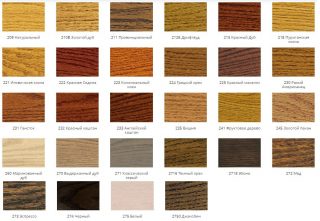
Protective agents are tinted during the manufacturing process at the factory. Manufacturers use tinted pigment pastes for this in the form of a concentrate. On site, color pigments are also added by following the instructions on the label.
There are compositions:
- tinting (painting);
- toning;
- colorless.
Colored materials are not suitable if the user wishes to retain the natural texture. In this case, tint or transparent impregnations are used. The first type gives a shade, while the surface is visible with a pattern of fibers.
Due to the different deepening between the elements of the annual rings, tinting preparations create an interesting effect. They simultaneously emphasize the drawing more or less, decorate the surface. Wood is being reborn, while inexpensive species can be passed off as noble ones.

Criterias of choice
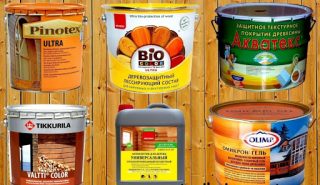
Take into account the purpose of the design and the need for treatment from a specific risk... For external walls, protection from moisture, insolation, frost is important. Boiler rooms need enhanced protection against ignition. The inner walls of bathrooms and saunas are protected from moisture and decay with wood impregnations. When decorating the interior, they take decorative materials.
When buying, pay attention to other factors:
- the composition of the solution;
- ecological cleanliness;
- expense of funds.
Some impregnations, for example, based on acrylic, do not resist frost well, so they are not used outside. Alkyd, bituminous ones are not used inside, since they are caustic, they can release harmful components into the surrounding space. They are used on facades, fences, in utility rooms.
Acting the consumption of the impregnating agent. For example, resinous materials are consumed more due to viscosity, and aqueous solutions are less. It is necessary to take into account the depth of penetration of the composition into the wood, since this factor also affects the consumption rate.
For interior work
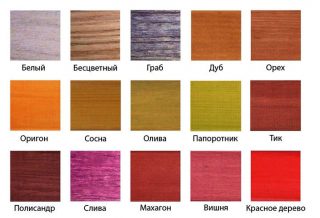
In the house, liquids are used with the inclusion of natural ingredients as a base, for example, organic solvents, oils, wax. They are usually water-based.
Basic requirements for compositions for interior work:
- ecological cleanliness;
- lack of a poisonous smell;
- there is no release of harmful components during operation.
They use moisture-protective preparations, antiseptics, fire-retardant impregnations. Such substances include Tikkurila, Biotex Universal, Pinotex, Neomid Eco, Extra Avatex, Aquatek Rogneda. An effective and inexpensive drug Ekodom.
For outdoor work
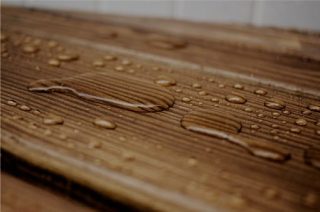
They use resistant impregnations, since the facades and external elements of the structure experience a more aggressive effect than the internal ones.
Pay attention to quality:
- antiseptic;
- waterproof;
- resistance against ultraviolet radiation;
- counteracting the appearance of microorganisms;
- resistance to temperature changes;
- beautiful view.
The impregnations are used: Tikkurila Eco Wood, Pinotex Ultra, Dufa, Protect, Nortex Disinfector. The outer walls of the baths are treated with effective anti-rot agents, water-repellent drugs, since steam comes in from the inside, dampness develops. Combined solutions are used.
Popular manufacturers
Common brands and manufacturers:
- Belinka. The Slovenian company produces impregnations for protection and decorative treatment in the form of colorless, tinting and colored compounds. There are azure primers with wax inclusions, colorful materials. There are representative offices in many cities in Russia.
- Tikkurila. The concern from Finland produces many series of paints, varnishes, wood impregnations. They are based on natural waxes and oils, so the products are environmentally friendly. There are antiseptics that can be mixed with the pigment at the request of the customer.
- Neomid... The manufacturing company is located in Russia. The products are categorized as top quality in the field of wood conservators. The formulations contain a color scheme to control the uniformity of processing.
- Aquatex. Domestic manufacturers produce combined and special impregnations for decking, solid wood structures, particle boards.
Russian company NPO Drevozashchita manufactures products for wood brands Senezh. The list of products includes biopyrens, antiseptics, preservatives.
Recommendations for use
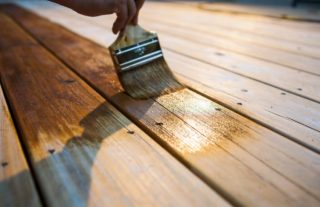
Dilute impregnation with special solvents depending on the basis. The category of such substances can be read on the label or in the instructions for the preparation.
Breeding rules:
- water is used for solutions where there is water in the composition, but there are no organic diluents;
- the volume of the additive should not exceed the amount in volume or percentage indicated by the manufacturer, so as not to reduce the quality;
- concentrated preparations are diluted with the proposed solvents.
Launder funds from the surface until frozen. There are special solutions for removing drops, cleaning stained areas.Dissolved carbonate perhydrate or bleach is used from the available preparations.
Apply impregnations with a roller, brush, spray... In difficult places, use brushes or spray guns for high-quality processing. The second layer is applied after 12 - 24 hours so that the previous one is completely dry. After processing, villi may rise on the surface. They are removed with emery No. 100, 120.
Making wood impregnation with your own hands
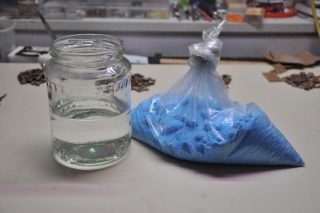
Protective agents are prepared at home - this way they reduce the cost of impregnation. For bituminous you will need a solid resin, diesel fuel. Bitumen is melted in a metal container over an open fire. After dissolving, add gasoline, mix. The impregnation evaporates quickly, so it is applied immediately.
Effective antiseptic based on copper sulfate prepared by adding a chemical element to hot water, stirring to dissolve completely. For use inside, observe the proportion of 400 g per ten-liter bucket. For outdoor use, dilute 1 - 2 kg of copper sulfate in a similar volume of liquid. The solution is stored without loss of quality for up to three days, at which time it is necessary to process it.

